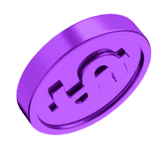
Kirby Air Ride: history, specs, current price and legacy of the GameCube classic
Kirby Air Ride was born as an experiment by HAL Laboratory under the direction of Masahiro Sakurai, the creator of the Kirby franchise and later the mind behind Super Smash Bros..
Originally planned for the Nintendo 64 under the title Kirby Bowl 64, the project faced multiple cancellations before finally releasing on GameCube in 2003 (Japan and North America) and 2004 (Europe).
Nintendo’s goal was to create a racing game that felt different from Mario Kart or F-Zero: a simple, approachable experience full of Kirby’s trademark charm. Sakurai’s vision was to make it playable with a single button, keeping the focus on fun rather than complexity.
Specifications and gameplay
Developer: HAL Laboratory
Publisher: Nintendo
Platform: Nintendo GameCube
Release Dates:
- Japan: July 11, 2003
- North America: October 13, 2003
- Europe: February 27, 2004
Genre: Racing / Action
Players: 1–4 (local multiplayer)
The game featured three core modes:
- Air Ride: classic racing circuits emphasizing speed and control.
- Top Ride: top-down tracks with short, chaotic matches reminiscent of 90s arcade games.
- City Trial: the fan-favorite mode where players explore a large open map, collect upgrades, and prepare for a random final challenge.
Kirby could also absorb abilities from enemies and environments, adding depth and strategy to each race. Different “stars” (vehicles) had unique stats like speed, acceleration, and handling, encouraging experimentation.
Visuals and sound
Kirby Air Ride made full use of the GameCube’s power to deliver bright, fluid visuals with colorful landscapes and high-speed effects.
The soundtrack, composed by Jun Ishikawa and Hirokazu Ando, blended energetic new tracks with remixes of classic Kirby themes, capturing the game’s vibrant personality.

Current market value and collectibility
Today, Kirby Air Ride is a highly sought-after collector’s item. Prices for physical copies range between €120–200, depending on condition and region.
Complete editions with manual and original box can exceed this value, especially due to the lack of modern re-releases.
Reception and legacy
Upon release, reviews were mixed: critics praised its originality and the City Trial mode but criticized its simplicity.
Over time, it earned a cult following. Fans now consider it one of Nintendo’s most underrated gems, often citing it as an example of creative design in an oversaturated genre.
The City Trial mode in particular has inspired other games and continues to be referenced by players who hope for a spiritual successor.
Rumors of a sequel
Recent speculation hints at a possible Kirby Air Riders project in development for the Nintendo Switch 2, with expanded online play, vehicle customization, and open-world trials.
While unconfirmed, the rumors alone show the lasting demand for this unique concept.
Conclusion
Kirby Air Ride remains one of Nintendo’s most imaginative experiments—a game that fused simplicity, charm, and competition in a way no one else dared to try.
Its easy controls, vibrant world and endlessly replayable City Trial mode have made it a true cult classic.
Even two decades later, the pink hero’s flight across the skies of Dream Land still feels timeless — a perfect reminder that fun doesn’t need to be complicated.









